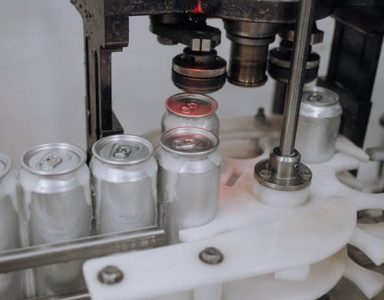Well, of course, they are lucrative and there is nothing probable about them. They are designed to make money. They do not build beautiful multi-million dollar casinos to lose. They build them to make money.
The house always has an edge. The edge is the average loss to the initial bet. The edge could be slight like .63% in eight deck blackjack. Or, it could be huge, between 25-29%, in Keno. So, playing Blackjack, the most favorable game to the customer, you will lose an average .63¢ each hand for each dollar bet. That is assuming you play perfectly, which almost no one does. If you play Keno, you will lose an average 25-30¢ for each dollar bet.
Why do people bet then? Well, there is another key word in the above definition of edge. That word is average. The edge is the average loss to the initial bet. It is not the for sure, guaranteed, loss with each bet. Sometimes the gamblers win. They win enough, and sometimes big enough, to give everyone home. This is that fickle thing called luck. It is fickle because of the edge. The more you bet, the house take will get closer and closer to the edge percentage.
People bet because they believe they are “hot” or they are “on a streak.” They believe they can predict the next card through hunches or feels of how things have been going. They believe that they are on a roll, that they are saavy, they can beat the probabilities. Sure gamblers win and lose. They can win and lose in streaks, long and short, but over time the edge is deadly accurate.
While Demand Planning is not exactly the same, there are similarities. People think they are smarter than an optimized Statistical Forecast. Why not? People have insights into the intricacies of the market place. They have hunches and feels of what they believe will happen. So, they override the statistical forecast and lose.
There is no edge in Demand Planning as in casinos. But, the same human belief that we can beat the house has us overriding statistical forecasts. What is the house in this case? The base forecast generated by the system. When done right, optimized statistical forecasts minimize errors based on history. History is no guarantee of the future but if there are no fundamental changes in the market place e.g. gas prices going up or down 20%, the near future will behave somewhat like the recent past. No hunch or feel will change that.
It happens all the time. People think they are smarter than the system. They think they can beat the house. Most of the time they do not. Yet, since there is variation, people beat the system often enough to give them the same hope and false sense of security that attracts so many people to casinos. It is truly an amazing psychology.
There are random shocks such as an unprecedented cold or warm spells, like the entire financial system melting down as it did in October of 2008. These shocks may require taking the entire forecast up or down. But these are not so much hunches but rather real intelligence that the near future may follow the seasonal pattern of the past but not at the same level.
What evidence is there for this? New products and special promotional events. There is no history for new products and no relevant history for promotions. So, it is up to humans to predict based on purely hunch, feel, and, oh yeah, market research. Based on our experience, new products have the worst performance relative to forecast. Often the error, or bias, is that we over forecast for new products. We always think they will do better than they do. Who is responsible for the new product forecasts? They come from Marketing and Sales… bless their optimistic hearts. Product managers are the proud parents of the new product and fully expect their children all to grow up to be stars.
So, if we cannot really beat a well optimized and managed statistical forecast for base business, why do we spend so much time and energy on them? We see no reason. Prepare the system properly, have sound data management, accurate Bills of Materials, and such. Then let the system you invested millions of dollars do its job. Worry about new products, promos, and trying interpret random shocks when they came. This is what human beings do best synthesize disparate sources of different kinds of information. We just should overdo it i.e. do it all the time. We can maintain this important role until Artificial Intelligence is made available in standard ERPs.
There is a certain special class of human that can even muck (technical term) it more than our Sales and Marketing brethren: Senior Management. They can and sometimes do take a very good forecast and know or will or demand that more will be sold. Next thing you know, the forecast is taken up and the MRP system dutifully drives production to create more inventory than you will need.
A division of one company we know very well, did it right. This CPG company went to a fixed thirteen week moving average for all existing products. This was their base forecast, pure and simple. No one could touch the forecast. People only forecast promotions and new products. It wasn’t yet called S&OP back then, but the planning meetings were dramatically curtailed. In combination with a move to pull systems, this process worked very well. This division went from 8 to 12 inventory turns. Inventory shifted from being heavy on finished goods to being heavier on raw and pack materials. This forecast scheme was not even optimal and it was better than the forecast and human intelligence method that was being used. It lasted until a more “intelligent” management team that just didn’t took over and returned to more traditional methods.
Remember you really can’t beat the house…


